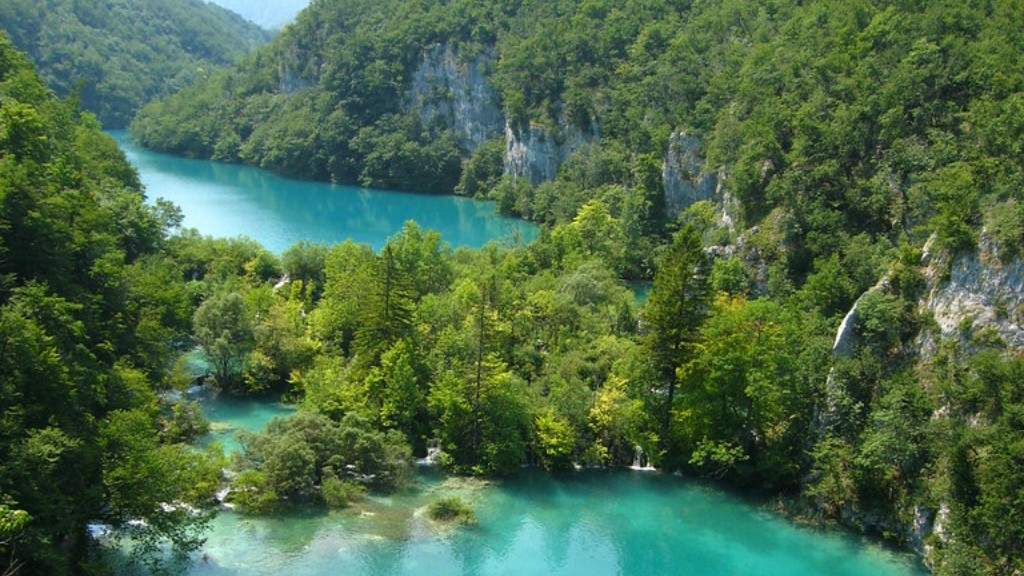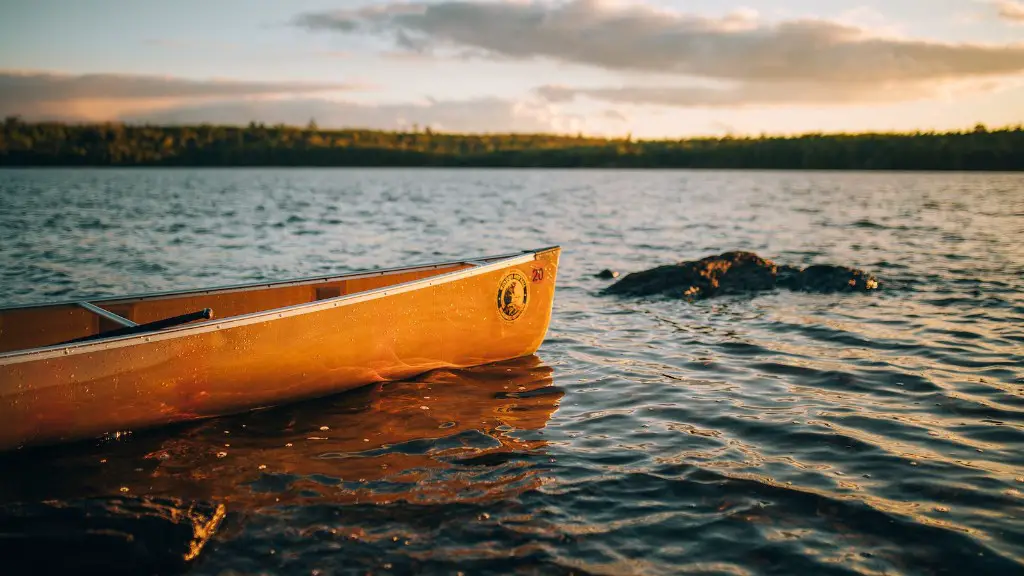Lake Superior is one of the most beautiful and peaceful lakes in the United States, with crystal blue waters and a vast array of activities available to those who visit its shores. But what many don’t realize is that it is also home to a much larger hidden danger – the threat of a major flood. Thousands of houses sit on the edge of Lake Superior, elevation just above the lake water level, making them particularly vulnerable to flooding during especially dangerous weather conditions. In recent years, the area has experienced more severe weather and rising waters, leading to an increased risk of flooding, and unfortunately, a number of homes and communities have been affected.
Flooding of Lake Superior is a serious issue and has the potential to cause significant damage to property and livelihood. Many of the local governments in the area are taking measures to mitigate the threat of floods by enforcing mandatory building codes and regulations. Those who are looking to construct a house on the edge of the lake are required to take certain precautions, such as elevating structures and installing proper drainage systems to minimize the risk of water damage. Additionally, many governments are also providing informational resources to their citizens to help them to better understand the risks and develop safety plans.
Environmental experts are also warning of the potential repercussions of flooding on Lake Superior. According to climatologists, climate change is causing the lake water levels to rise, and this is resulting in more severe weather patterns in the area. This, in turn, increases the likelihood of flooding in the area, leading to more severe water damage. As such, proper preparation and precaution are necessary to minimize the risk of flooding in the area.
Furthermore, proper insurance coverage is essential for those who own property on the shores of Lake Superior. Homeowners should be aware of their policies and ensure that they are properly covered in the event of a flood. Many insurers provide special coverage for properties that are located in flood-prone areas, and this can provide additional financial protection in the event of damage due to flood waters.
Considering the risks, many homeowners are left to wonder if it is still safe to build on the shores of Lake Superior. The answer is a resounding ‘yes’, as long as the proper precautions are taken. By following building codes, investing in insurance coverage, and understanding the potential risks of home ownership in the area, those who are interested in a lakefront property can do so in a safe and responsible manner.
Building Codes
For those interested in constructing a home on Lake Superior, it’s important to know the building codes in the area. Building codes are regulations enacted by the local government which are designed to ensure the safety and stability of structures in the area. Those who plan to build a home on the lake should be aware of the building codes in the area, and make sure that their structure abides by all of the regulations.
Additionally, it’s important to note that some areas on Lake Superior have stricter building codes than others. For example, some areas have regulations that mandate the use of specialized materials such as steel, concrete, or other durable materials that are better equipped to withstand flooding. In other areas, the elevation of the house must be taken into consideration and must be elevated higher than the lake water levels. It is essential to know the specific regulations of the area to ensure that the structure is built safely and securely.
In addition to the building codes, there are also a number of other safety measures that can be taken to protect a property from flooding. Land owners can install water absorbent barriers, such as sandbags or rain gardens, which can prevent the water from reaching the structure itself. Additionally, proper drainage systems should be installed to facilitate the flow of water away from the home. The installation of these measures can help to minimize the damage of a potential flood.
Insurance Coverage
Homeowners who own property on the shores of Lake Superior should be aware of the insurance coverage available and make sure that they are properly covered for flooding. Most standard home insurance policies do not cover flood damage, so it is important to speak to a qualified insurance provider to ensure that the home is adequately protected. Some insurance companies provide special policies for homes located in flood-prone areas that cover damages caused by flooding. Furthermore, it is important to have a complete understanding of the policy so that any potential claims can be filed with ease in the event of a disaster.
Additionally, some local governments provide guidance to homeowners on filing insurance claims in the wake of a flood. Some of these regulations can be confusing, but speaking to a qualified professional can help to simplify the process. A qualified insurance agent, lawyer, or local government employee can all provide valuable information about filing a claim in the wake of a flood.
Safety Plans
In order to maximize the safety of homeowners, local governments are increasingly providing informational resources to the public. These resources provide comprehensive information about flood preparation and prevention, and they can help homeowners to better understand the risks and develop safety plans. Such resources often include information on the appropriate building codes, insurance coverage, local safety plans, and other forms of preparation.
In addition to providing informational resources, many local governments in the area are enacting regulations to help mitigate the risk of flooding. As mentioned before, certain building codes are enforced in certain areas, such as the requirement of elevating structures above the water level. Additionally, other regulations such as the installation of rain gardens and the practice of floodproofing structures are also put in place to minimize the potential damage of a flood.
Finally, it is important to remember that safety should always be at the forefront of any plan for a property on Lake Superior. This means taking the proper precautions, investing in the right insurance coverage, and understanding the risks of living in a flood-prone area. By following these steps and understanding the steps that local governments are taking to mitigate flooding, those who are interested in a lakefront property can do so in a safe and responsible manner.
Emergency Prep
In order to be prepared for a potential flood on Lake Superior, homeowners should ensure that they have a reliable emergency plan in place. This means having all the essential supplies, such as medical equipment, food, and water, as well as adequate shelter and an evacuation plan. Additionally, it is important to have a clear idea of how to contact local authorities in the event of an emergency, and what measures to take in order to protect family members and pets.
Furthermore, it is also necessary to be aware of the warning signs of a potential flood on the lake. Paying close attention to weather forecasts and staying up to date with news about the lake can help to alert homeowners to potential danger. Additionally, residents can take certain measures to monitor the water levels, such as installing a water level gauge in their home. Such measures can help homeowners to better plan for a potential flood and minimize the risk of damage.
Finally, it is important to have a proper evacuation plan in place in the event of an emergency. It is essential to have a clear understanding of the evacuation routes and city shelters, as well as an alternate plan should the need arise. Additionally, it is important to remember to turn off all electrics, gas, and water lines before evacuating the property.
Conclusion
Living on Lake Superior is a beautiful and rewarding experience, but if done without proper precaution it can also be a potentially hazardous one. Therefore, it is essential to understand the risks of building or owning a property on the lake, as well as the measures that can be taken to minimize those risks. By following local building codes, taking out adequate insurance, and having a thorough understanding of the safety plans and emergency preparations, those who are interested in lakefront property can do so safely and responsibly.




